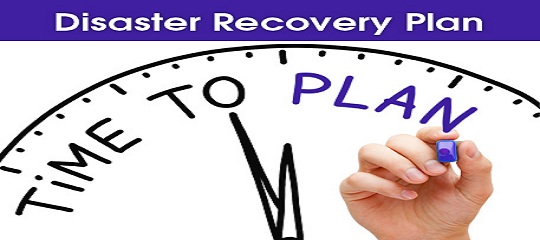“It wasn’t raining when Noah built the ark.” Howard Ruff has hit the nail on its head while explaining the significance of preparedness to deal with calamities or disasters that must be accepted as part of life.
Preparing for disasters essentially involves building strategies as well as re-examining existing plans in addition to testing these plans to remove gaps and holes.
Business implications of disaster
It is foolish to expect warnings before disasters with few exceptions of major storms that have names and categories. Natural or man-made disasters can be in the form of electric fires, failed air conditioning units, terrorist attacks, earthquakes, and so forth.
Impact of disasters on businesses is usually catastrophic. It can not
only cause financial losses in terms of revenues but can also result in loss of productivity, or jeopardize reputation of organizations with loss of customer confidence. Disasters put a brake to business continuity causing long terms loss of business and shelving of future expansion plans.
According to USSBA, more than 90 percent of enterprises crash within two years after being struck by a disaster and as per Insurance Institute for Business and Home Safety, one out of four companies are unable to resume operations post a major disaster.
It is therefore essential to prepare your business to restore, resume, and continue the routine operations with a minimum downtime during or after any outage. An ideal disaster recovery plan must enhance ability of your organization to face the unexpected.
Planning DR solutions for business
There are multiple steps involved in the process of DR planning for business enterprises. The major highlights of Disaster Recovery planning process are as follows:
- Risk identification
- Risk classification
- Identification of resources for business continuity during disaster
- Mechanism to restore business to normalcy
Risk evaluation and identification of threats
Disasters have potential to cause widespread damage to property as well as business processes. Every organization must evaluate risks by considering different categories of processes including supply chains, inventories, hardware failures, accessibility, network connectivity, communications, security, utilities, and so forth.
This should follow categorization of these business aspects according to their potential to impact business continuity. This will facilitate prioritization while focusing on restoration of these processes during the disaster recovery. It will also provide you with estimates about potential of your organization to tolerate extreme environments and optimum level of IT resources that would be required while dealing with disasters.
Risk evaluation is very important for every business because categories of high risk business processes vary according to different business verticals. For example, for a healthcare provider, the most important risk would be restoration of power to ensure well being of patients.
Estimation of recovery period
Critical period of downtime before a business can be impacted varies significantly for different verticals of industries. Online enterprises or manufacturing industry with continuous process cannot afford even a single minute of downtime. This period is called as tolerance limit of an organization.
It is extremely important to determine tolerance limit of the organization since the implementation of recovery sequence depends on this. By understanding tolerance limit of different applications you can prioritize the applications with less tolerance limits.
In the similar fashion you need to evaluate acceptable level of RPO (Recovery Point Objective) as well as RTO (Recovery Time Objective) for different sets of applications. Ideally, disaster recovery solution based on public cloud can efficiently meet your requirements of Recovery Time Objectives due to absence of single point of failure. In addition to this the recovery is also faster as well as more affordable with Public Cloud Disaster Recovery Solutions.
Significance of encrypted and secure backups
For any business, its data is considered as its lifeblood and therefore it deserves to be secured under all circumstances. In order to ensure that your business survives the most overwhelming event, you need to backup your databases, emails, files, and operating systems. It is also recommended to have special recovery procedures in place for data restoration from repositories.
This brings us to importance of off-site data backup facilities that would not be impacted by disaster that strikes your on-site infrastructure. Ideal backup solutions must provide facility of online data backup via a secured connection.
It is for the same reason; cloud data backup solutions are highly sought after by modern businesses. These are usually preferred as an alternative or addition to tape backups. Cloud data storage and backup solutions are significantly more cost effective as well. Additionally these data storage options offer shorter recovery periods and longer retention periods.
Developing effective communication plans
Communications play significant ole during emergencies and therefore you should be in a position to support your DR plan with effective communication strategy with concrete assignment of roles.
Make sure to compile updated records of contact numbers of key personnel and availability of the effective collaboration suite to facilitate instant messaging, document sharing, and online meetings. Try to establish alternate means of communications because the basic communication platforms are usually affected during disasters.
Disaster recovery plans based on cloud computing are regarded as ideal for business environments because these can rapidly restore business availability with minimum downtime. These are efficient, secure, and economical. It is important to design and test a practical and robust DR plan. You can also ensure that the DR plan is part of Service Level Agreements.
Interesting Topic : Should I Test My Disaster Recovery Plan?
Server virtualization’s effect on DR






 Live Chat
Live Chat